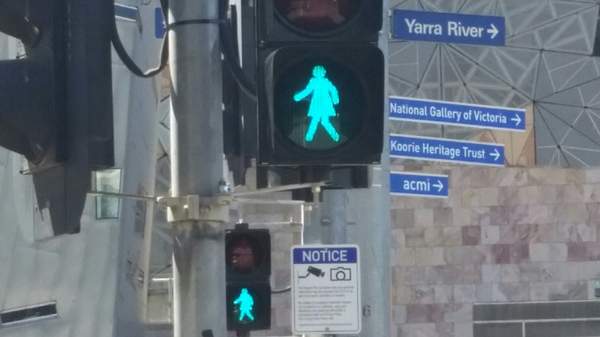Overview
Gender bias is, unfortunately, a thing that people identifying as women (i.e. 50 percent of the population) deal with on a regular basis. A lot of the time it's so culturally ingrained, it goes mostly unnoticed — so one of the ways gender equality activists and groups often raise awareness about the issue is by pointing out the small, every day inequalities and making the population think about them. Like when you're standing at the traffic lights waiting for the little man to turn green. But if you're in Melbourne today — look up. For International Women's Day, ten of the CBD's pedestrian crossing traffic lights will not depict the standard male sign, but a female one.
The project — which will see ten pedestrian crossing lights around the Swanston and Flinders intersection change from male to female representation — has been led (and funded) by local business and community non-profit organisation the Committee for Melbourne. "The idea is to install traffic lights with female representation, as well as male representation, to help reduce unconscious bias," committee chief executive Martine Letts told ABC News.
Though a small change — and one that is largely symbolic, particularly on International Women's Day — the symbols are supposed to be a meaningful way to give women more ownership over public space. The aim of the committee, says Letts, is to get one-to-one male and female representation.
Of course, not all female-identifying people wear skirts or necessarily feel represented by what is a traditional sign used to symbolise the split between male and female. Nonetheless, seeing a little green woman as you cross Flinders Street is a bit of a novelty — and one that could stick around for a while. The project is apparently supported by the Victorian Government and will remain in place for a 12-month trial.
